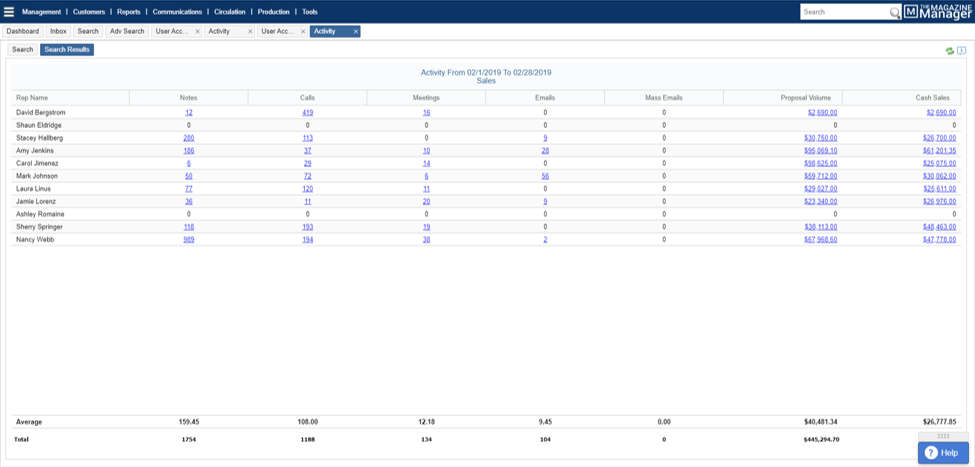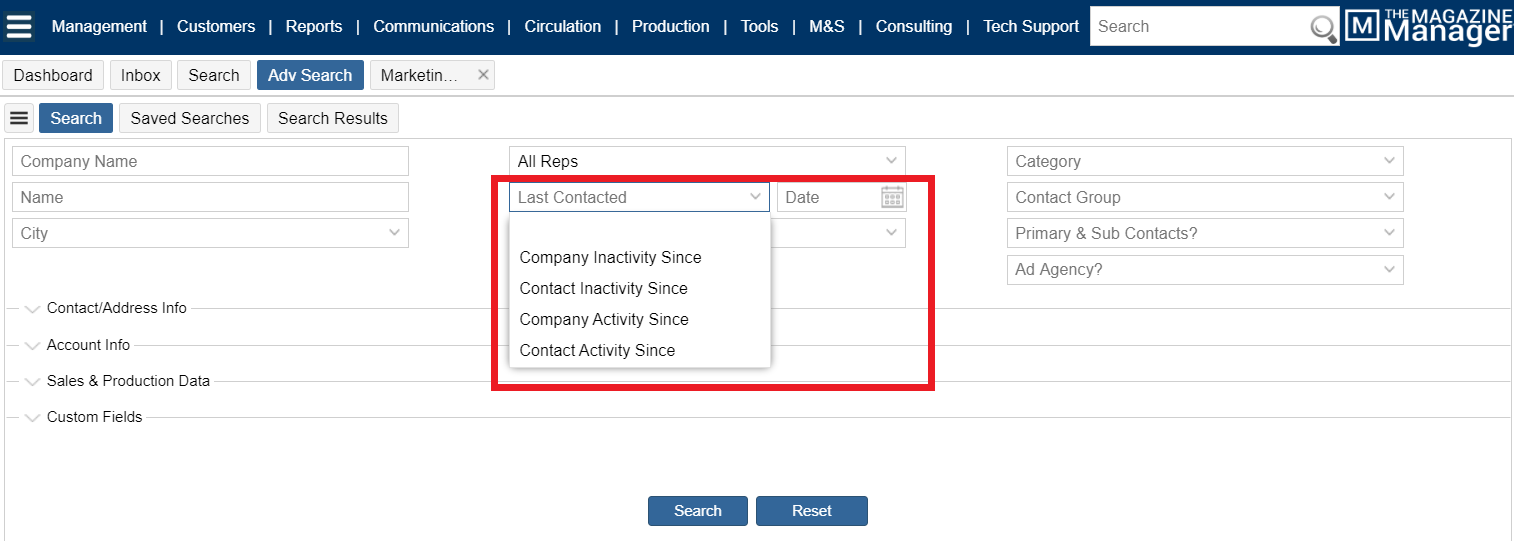The territory fight: It’s the bane of every publisher and sales manager’s existence. All managers in the publishing industry have to deal with it, but there aren’t many who like to, and for good reason! The best sales reps are notoriously competitive, testing even the best manager’s patience from the very beginning, which is why having good account management rules is important.
The challenge is that if your rules are too strict, you won’t get the level of competition necessary to maximize your sales revenue, and if your rules are too relaxed, it turns into a free-for-all where sales reps are often pitted against each other. Then, frequent disputes arise, which wear thin on managers and impact your sales team’s morale. As any publisher knows, it’s not a small issue.
In this blog, I’m going to share my two cents on account management based on my 25 years of publishing experience.
1. Determine how many accounts a sales rep can manage
Not only manage, but manage effectively.
I’d say the average maximum number of accounts a rep can properly manage is about 450, broken down as roughly 300 regular, or run-of-book, accounts and 150 special section accounts, but you should really be considering account caps on a case-by-case basis. This promotes a competitive system that new sales reps can thrive in, not just one that protects tenure.
In my earlier days, I required all reps to work 450 accounts, but as I gained more experience, I realized a flat number is flawed because of such broad variation in the activity and work rate per rep. I had many over the years struggle to successfully handle 300 accounts at a time, so I played with different strategies, and one of the tricks I discovered was basing the cap on the number of calls a rep averaged per week, multiplied by four.
Experienced reps who have strong relationships with their accounts may only call 50-60 clients a week, but these calls are longer and more meaningful. Thus, their cap would be 240 accounts.
Newer sales reps may need to make 125 calls to even get a meeting, so after multiplying that by four, you’ll determine their cap to be 500 accounts.
2. Implement activity requirements
This is how you can motivate your reps to maintain their accounts, monitor their performances, and make informed decisions to reassign accounts when necessary.
For each run-of-book account, I’ve found that reps should execute at least six calls over a three-month period or meet at least once within four months. Otherwise, the account is up for other reps’ taking.
For special section accounts, something I’ve tried is requiring the same level of activity as run-of-book accounts, but only in the six months before the special section appeared. This way, reps wouldn’t lose these accounts for a lack of communication during the six months of the year after the special section had run.
An issue that arose here was inconsistency among how reps classified accounts. One rep might’ve classified an account as a special section that another rep thought could run at a far greater frequency. To combat this, I recommend each rep’s account cap consist of two-thirds run-of-book accounts and one-third special section accounts. This creates a challenge system where reps would have to give up an existing run-of-book account in order to make room for a specialty account to take its place.
Below is an Activity Report from Magazine Manager, which I created more than 20 years ago and has been used by roughly 10,000 sales managers to get an overview of what their reps were doing on a daily basis. The weekly bookings were obviously the bottom line, but I looked at calls and meetings to determine the appropriate account cap for each rep.

3. Don’t leave room for confusion when it comes to caps and activity
One objection you’ll find sales reps make in response to account caps and activity requirements is wanting to keep a large list of accounts to mass email. The vast majority of publishers I’ve worked with agree that sending a monthly email does not count as sufficient sales activity to allow a sales rep to protect an account.
Reps can often pick up three or four accounts a month simply by sending mass emails, so this is an area they’ll go to the mat for. This is technically marketing, though. Ideally, you’d have a dedicated marketer or marketing team to handle this function.
If not, it’s okay to allow sales reps to do this, but these accounts will require their own category.
I’d recommend creating a third category for marketing rights where reps can keep their names on an account for the purposes of sending mass email promotions to them, but they don’t count for or against their account cap amount. The trick here is evenly spreading these marketing rights accounts among your reps and actively managing your customer relationship management (CRM) software. An unmanaged media sales CRM can lead to reps who have been around the longest ultimately owning all the accounts.
4. Establish boundaries for divvying up accounts
There are several ways to distribute accounts to your sales team, but you should make sure each method has a proper set of rules in place to avoid confusion. Here’s what to consider when distributing accounts by geography, category, and size.
By geography
Among the 17,000 media products using Magazine Manager, the easiest and most popular way we’ve seen accounts split up is by geography. To do it, split the country, state, or city you work in into territories and distribute among your reps. It’s a clear and finite method; easy to understand, easy to settle disputes, and easy to re-assign.
But there is a downside I always struggled with as a publisher. Unless you have multiple reps competing against each other in a territory, it leads to complacency. I never liked individual reps getting a whole geographic territory to themselves. It works well when that rep is a superstar, but on the average team, only 10% of salespeople will be superstars, which means 90% of your territories can underperform.
If you use a pure territory system, my advice is to have at least two reps working in an area and competing against each other.
By category
Another way to divvy accounts is by category. One rep gets jewelry, another gets airplanes and boats, and another gets hospitals, etc. This method has its pros, with the main one being reps acquiring skills in a particular industry that then makes them great at selling a certain category.
I’ve witnessed it firsthand. One of our sales reps would sell three times the number of doctors that other sales reps would sell. We tried to replicate her techniques, but no one else could do it; she simply connected better with doctors. So, we made her a dedicated rep for the category.
Exclusively giving reps a category has the same caveats as exclusive territories: you lose competition. But, because of the specialized skill sets and understanding that comes from working within an industry, I’m much more open to giving a rep a dedicated category than I would a dedicated geographic territory.
By account size
The final common way to distribute accounts is by size, and most publishers currently use this method. If you have a killer sales rep who gets significantly larger contracts than everybody else, there’s a strong case for that person to be working on your biggest accounts. It’s important to consider that this means you have centralized your business around one person. When he or she leaves your company, those major accounts might, too.
This method is risky but can be executed successfully when transparency is involved. Create senior-level titles to designate those who work on the “big stuff” from other reps. It can both decrease animosity within the team and increase motivation to one day reach senior-levels.
5. Remember those special scenarios
The grey area of account management presents itself in the forms of ad, PR, and marketing agencies and clients with multiple locations.
Agencies
In my experience, I’ve found that reps love to fight over ad agencies. It’s like a sport to them. I don’t recommend that any rep should own a whole agency as an account. Many agencies work with clients in multiple territories, so if an agency reaches out to a rep with a client outside of his or her territory, that rep should turn the account over to you, the publisher, or sales manager to distribute to reps in the according territory.
When a rep has a great relationship with a buyer at an agency, you can decide whether to split commissions and include his/her participation, but this can be a double-edged sword. With this knowledge in mind, reps may try and steer business to themselves, telling their agency to contact them first with new accounts.
I’ve found the best rule when dealing with agencies is to let an account’s geographic location take precedence over an agency relationship with another rep.
Clients with multiple locations
For clients with one location, it’s cut-and-dried; a rep within that territory will own the account. But what happens if a business has multiple locations? My two-part solution is this:
- If the marketing is handled at multiple locations in different territories, reps in those specific territories will handle the account in their territory. No one rep should handle all locations. This is common with franchises and stores that are part of a chain but make independent marketing decisions.
- If all locations’ marketing is handled out of one place, typically the corporate office, I recommend that a rep in charge of the territory where the corporate office is located gets the account.
6. Keep an eye out for inactivity
You’ve done all this work to fairly distribute accounts among your reps based on different considerations. Surely now you can sit back and relax, right? Unfortunately, not yet.
Identifying Inactive Accounts
Earlier, I talked about the importance of activity in determining the number of accounts a rep can manage, but how can you confirm there’s actual activity happening? I arrived at this same dilemma nearly a decade ago, which is why I created the Last Contacted search feature in Magazine Manager. It’s truly a bread-and-butter resource for our sales managers, providing insights on reps’ performances and informing decisions when it comes to reassigning inactive accounts.

Reallocate existing accounts and assign new ones to active reps
You should evaluate your sales team’s performance at least once a year, but preferably more frequently than that, to ensure no accounts fall by the wayside. Low call numbers, little-to-no progression on the sales continuum, or a lack of signed contracts means it’s time to reallocate those accounts to reps who can get the job done.
Needing to take this action doesn’t necessarily mean a rep is bad; a client may be high on one rep’s list and low on another’s. A different rep may spark interest from the client due to increased contact and better engagement.
New accounts that reach out to your publication should be distributed among your sales team on a rotating basis, but it’s fair to reward reps demonstrating higher closing rates with larger accounts.
Accounts that aren’t in your database should be fair game for reps to claim, as long as the account resides within their territory. It’s likely that your best reps will be the ones finding new accounts to manage anyway, but this could also incentivize the less-engaged reps to see what’s going on in their territories outside of their cubicle walls.
Wrapping up
This was a lot of information, but account management is a complex topic. No matter which practices you employ in your strategy, make sure to establish and communicate a clear set of standards for your sales team. This way, reps know from the start what to expect and what’s expected of them. I’ll send you on your way with this sample rule book I compiled to provide you with some ideas as you solidify your own account management strategy.
The Sample Account Management Rule Book
- Activity goals: Each rep should aim for 100 client calls and 7 meetings per week.
- Regular account caps: Each rep’s cap will be based on 4x the average number of calls made per week over the last six months. If the average number of calls per week is 100, the number of run-of-book accounts a rep may register within the Magazine Manager CRM is 400.
- Specialty account caps: Additionally, each rep can register 150 special section accounts. Run-of-book contracts take precedence over special sections, and any rep who wants to claim a special section account as a run-of-book account to work on it for a longer contract may do so.
- Inactive accounts: Reps must call a run-of-book account at least 4 times during a 90 day period in order to protect that account. Accounts that have not been called at least 4 times in 90 days should be considered “inactive” and can be claimed by another rep.
- Unassigned Accounts: Any accounts that are not run-of-book or specialty should be considered unassigned and distributed evenly among reps in the accounts’ respective territories. Reps can send marketing emails to these accounts and eventually claim them as their own run-of-book or special section account if the client responds.
- Ad agencies: No rep should have rights to an entire ad agency. If an ad agency calls an out-of-territory rep, that rep must give the account to the appropriate rep for that territory.
- Multiple locations: If marketing for multiple locations is handled from one corporate office, a rep in the territory of the corporate office should handle the account. If marketing for multiple locations is handled on-site, reps in the territories of those locations should handle the accounts.
- Challenging: Reps should be able to challenge any account which has not been signed to a contract within 18 months to claim as their own.
I hope that the recommendations I’ve provided you with today, based on decades of first-hand experience, will make the account management part of publishing a little less complex.
SEE FOR YOURSELF
The Magazine Manager is a web-based CRM solution designed to help digital and print publishers manage sales, production, and marketing in a centralized platform.


